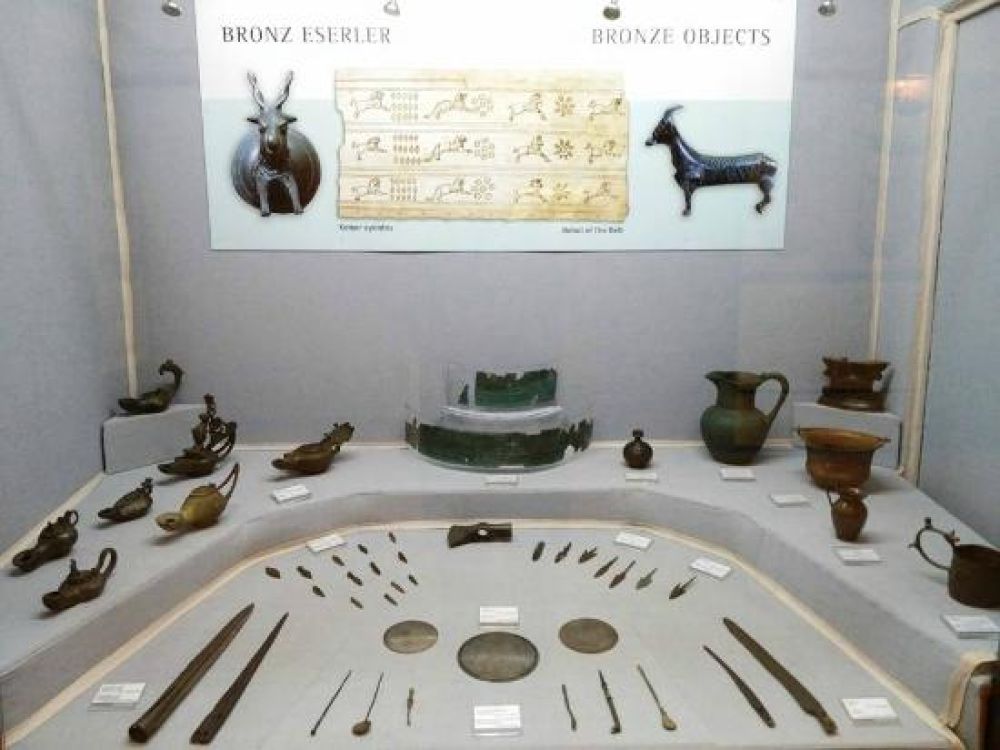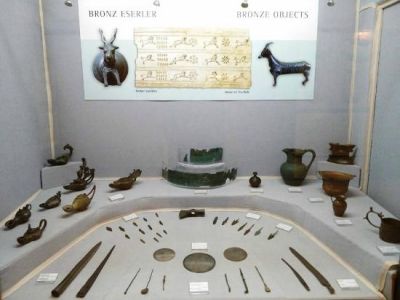

Embark on a journey through time with a knowledgeable guide leading you through the intriguing Prehistoric Collection at ?zmir History and Art Museum. The exhibit showcases a selection of relics that detail the life and progress of early civilizations in the Aegean region. From meticulously crafted pottery to ancient tools and weapons, each artifact on display provides insights into the daily lives, cultural practices, and artistic achievements of societies long gone. Your guide will tell the stories behind these priceless objects, ensuring a rich educational experience that will leave you with a deeper understanding of the prehistoric era and its influence on the region's history.
Delve into the sophisticated world of classical antiquity at ?zmir History and Art Museum by exploring the Sculptures Exhibit. This section features a collection of marble and bronze sculptures from the Hellenistic and Roman periods, depicting gods, goddesses, eminent historical figures, and mythological subjects. Each piece demonstrates the intricate craftsmanship and artistic prowess of the ancient sculptors. Visitors can spend time admiring the lifelike representation of forms, ponder the narratives each sculpture tells, and understand the evolution of sculptural techniques and styles from the classical antiquity period.
The Ceramics and Coins Display at ?zmir History and Art Museum offers a window into the region's economic and artistic history. This exhibit presents an array of pottery and coinage that spans several centuries, providing insight into the local craftsmanship, trade practices, and the economic history of ancient civilizations in Anatolia. Visitors will see a variety of ceramic objects from daily life, alongside an assortment of ancient coins minted across different time periods. This display is an educational experience, revealing stories of commerce, culture, and the complex system of trade that once thrived in this area.
Travel back in time to the Byzantine Empire at the ?zmir History and Art Museum's Byzantine Era Exhibition. This brings to life an era known for its religious and artistic grandeur. The exhibition features icons, frescoes, mosaics, and liturgical items that demonstrate the spiritual and aesthetic narratives of the period. Highlights include detailed depictions of saints and scenes from the Bible that offer a glimpse into the theological and cultural influences on art during the early Christian period in Anatolia. Visitors may appreciate the synthesis of Hellenistic and Christian elements typical of the Byzantine art form.
Explore the rich tapestry of Ottoman history at the ?zmir History and Art Museum through its Ottoman Empire Artifacts Collection. This assemblage includes elegant ceramics, intricately designed textiles, calligraphy, and traditional attire that evoke the grandiosity of the Ottoman period. The artifacts on display reflect the empire's extensive social and cultural influence, with items that have been meticulously preserved to showcase the luxurious tastes and sophisticated artistry of the time. This collection not only celebrates the aesthetic achievements but also educates visitors about the Ottoman Empire's impact on world history.
The ?zmir History and Art Museum is always seeking to provide fresh, educational, and engaging content for its visitors through a series of temporary exhibitions. These rotating exhibits can range from contemporary art installations, thematic historical presentations, to explorations of cultural heritage. Visitors are encouraged to check the museum's schedule ahead of their visit to see what unique temporary exhibits are on display, offering a novel perspective on various topics relevant to art, history, and society. These exhibitions are often created in collaboration with international museums and cultural institutions.
Catering to its younger visitors, the ?zmir History and Art Museum hosts interactive children's workshops that are both fun and informative. Under the guidance of experienced educators, children can engage in hands-on activities like pottery making, mosaic creation, and ancient writing techniques. These workshops are designed to spark curiosity, encourage creativity, and provide a tangible connection to history. They are a fantastic way for kids to learn about the past in a dynamic and immersive environment while creating their own works of art to take home as mementos.
The ?zmir History and Art Museum offers a series of engaging art history lectures for those looking to delve deeper into the cultural and historical narratives of the region. These lectures cover a range of topics, from the significance of ancient motifs in Anatolian art to the cross-cultural influences in Mediterranean artistic traditions. Delivered by scholars and experts in the field, these sessions provide rich context to the museum's collections and are designed to enhance the understanding and appreciation of the artworks and artifacts showcased throughout the museum.
Photography enthusiasts can indulge their passion by joining a specialized Photography Tour at the ?zmir History and Art Museum. Guided by a professional photographer, visitors will learn how to best capture the beauty and detail of the museum's exhibits, from the grand statues to the intricate details of ancient jewelry. The tour not only provides tips and techniques for taking museum-quality photographs but also offers historical insights into the artifacts being photographed. This is a rare chance to view the museum from a different lens, quite literally, and to leave with stunning images that memorialize the experience.
Appreciating the depth of knowledge and experience that senior citizens bring, the ?zmir History and Art Museum presents cultural programs tailored for the elderly. These programs might include guided tours with a slower pace, talks on art and history that resonate with their rich life experiences, or even interactive discussions where seniors can share their insights and memories related to the exhibits. These initiatives aim to provide an accessible and enjoyable museum experience for all ages, ensuring that senior visitors feel welcomed and engaged.
